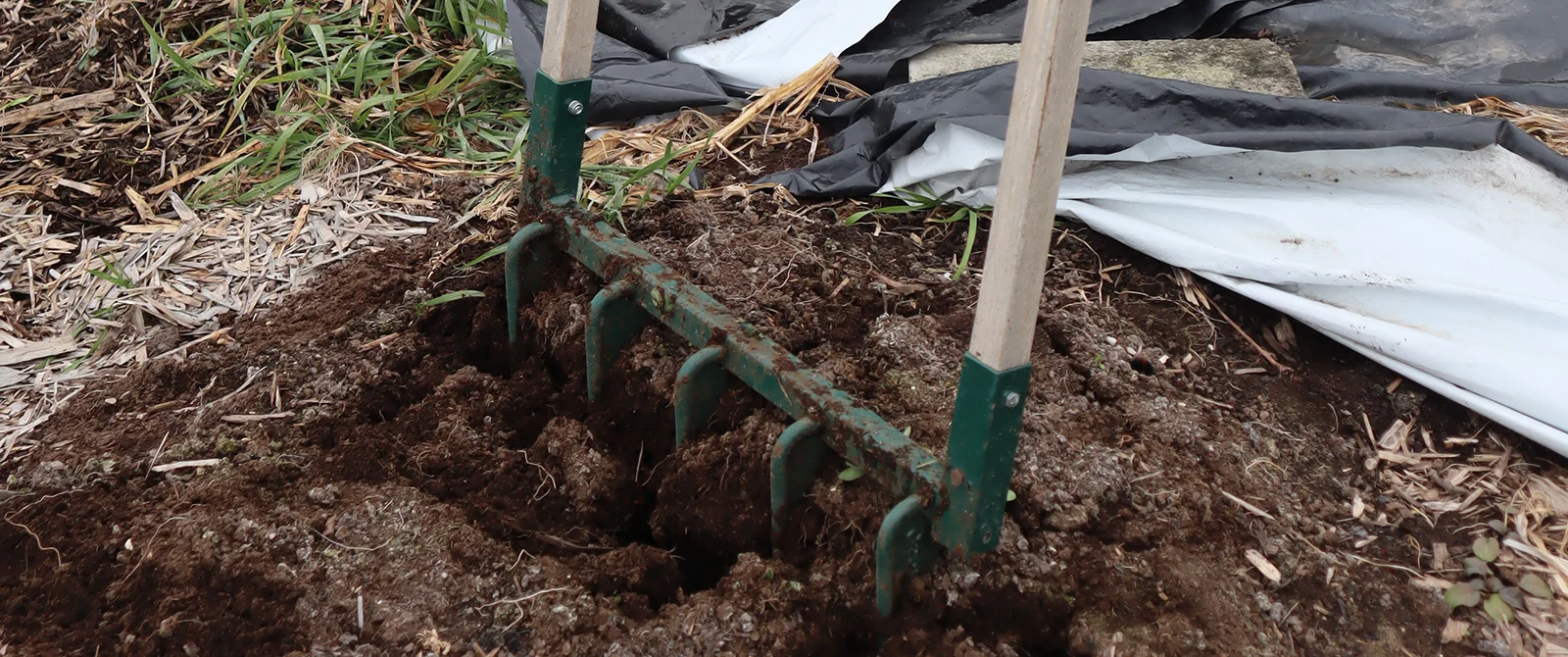Originally published in Lake of the Woods Area News, Volume 55, Number 2, Spring 2025
In my vocation as a sustainable farmer, I see a large part of my role as observing and seeking to understand complex systems. The conventional view of agriculture and many other aspects of our culture is to fix specific problems with specific solutions rather than looking holistically at the big picture.
Too often, this effort to address symptoms just ends up causing more problems. Using pesticides on food crops treats a symptom, while often making the root of the problem worse, necessitating the use of more and more pesticides.
Alternatively, we can take the view that to solve problems or challenges, we need to bring ourselves into alignment with nature. Nature has had millions of years to find an ever-evolving equilibrium.
In a balanced ecosystem there will be insect predators to insect pests. In this instance, insect predators are beneficial insects for gardeners because they prey upon insects that are pests in the garden. These good predators include hover flies, lady bugs, parasitic wasps, and many more. We can attract these insects to our gardens with diverse flower plantings.
When looking from a holistic, nature affirming view, my role as a farmer to manage pests becomes clear: foster plant health and ecosystem diversity for insect predator habitat.
Beyond addressing how to manage the pests that are in the area of the plants, we also need to address the ability of the plants to protect themselves. Plants have natural immune systems to deal with common pest problems, but, like us, they need to be in a healthy condition to have a robust immune system. The health of plants is linked directly to the health of the soil. To have one we must have the other.
So how do we foster soil health?
When it comes to soil health, things can get a bit complex and we have to think about soil microbes. Microbes is short form for microorganisms and refers generally to life forms that are too small to see with the human eye. We have trillions of microbes that live in and on our bodies, and collectively they are called our “microbiome”. While these include “germs”, the vast majority of these microbes are either neutral or beneficial and are an essential part of our immune system.
Plants have a microbiome as well. When plants photosynthesize and produce sugars, they excrete some of these sugars through their roots, which have the fancy name of “root exudates”. These roots exudates feed microbes, which get eaten by larger microbes, which get eaten by small insects etc. This food chain is often referred to as the “soil food web”. The poop of these critters, and the organic residues that are left by them when they die are then food for the plant, providing micronutrients necessary for a robust plant immune system. The infographic shown provides the technical terms for the different links in this food chain. This soil food web is connected to the animal food web through birds and small mammals.
This reciprocal relationship means that a healthy soil food web can contribute to a healthy plant. The more life that is teeming under the soil means more access to a diversity of nutrients for the plant.
How do we maintain a healthy soil food web?
- Adding organic matter (OM) through compost and mulch provides shelter for microbes to live in and on.
- Disturbing the soil as little as possible. Rototilling disrupts the life cycles of many soil organisms. Fungi especially take a long time to establish, and the more we disturb the soil the more we disturb them.
- Aerating and loosening the soil through low impact means such as broadforking gives them oxygen to breathe.
- Watering just the right amount. Good healthy soil should be about the consistency of moist chocolate cake.
- For food, they need decaying organic matter and root exudates. We avoid bare soil as much as possible! Ideally, this means having soil covered with living plants but using mulches and compost when that isn’t practical.
Cultivating a healthy soil food web in our gardens ultimately equates to cultivating our own health. The diversity of micronutrients that are provided to the plant through the soil food web are also passed onto humans in the form of more nutrient dense food. Our lives and the lives of microbes are inextricably linked. So, if you want to look out for number one, don’t forget to look out for the little guys.

